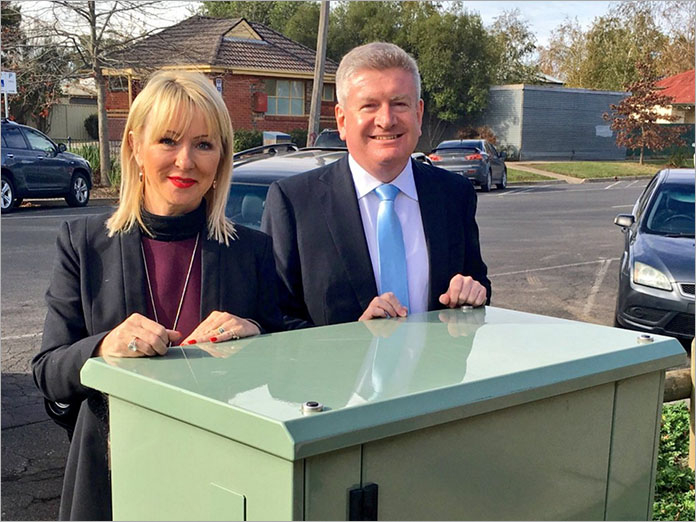
feature Sometimes the NBN company gets its node placement right. And sometimes it doesn’t. Today, Delimiter is proud to present a photo gallery entitled Nodes Behaving Badly, in which we highlight some of the worst Fibre to the Node infrastructure placement that Australia has to offer.
As you may recall, several weeks ago Delimiter put a call out there.
We’ve previously published photo galleries of the worst of the worst of Australia’s copper infrastructure, highlighting some pretty shocking examples of how a major telco like Telstra appears to be unable to maintain its infrastructure in tip-top condition.
The idea with this new article was to look at the new stuff. Right around Australia, right now, the NBN company and its contractors are deploying thousands upon thousands of brand Fibre to the Node cabinets and micronodes.
Most of this infrastructure has been deployed in sensible locations. But with so many thousands of nodes, the NBN company was bound to get a few wrong. In this photo gallery we’ll chronicle some of those examples, and offer modest suggestions for improvement.
This first photo was sent in by a reader named Marc. His comment? “FlexiHire are going to need a taller security fence”. We have to agree … that barbed wire doesn’t look so threatening when you can just hop on top of a friendly neighbourhood node and jump over!
Particularly puzzling is why the NBN company felt it had to build a concrete base for this node that looks to measure more than half a metre. Why was that necessary?
In this next photo, sent in by Riley, the NBN company has left very little space for pedestrians to pass by its node. This looks like a tight squeeze … especially if you have a stroller for your child.
Putting nodes a little bit too close to narrow footpaths is become a NBN company habit:
As well as in inconvenient spots just around the corner from an ATM machine where people are sure to bump into it … right next to the garbage bins.
In this next set, we have a series, which we’d like to call “Now you see it, node you don’t”. Reader Robert tells us that the node in the below photo was installed in early April 2016.
In May 2016, the node was removed:
And then later that same month, the node appeared to have been moved 200m down the road to join a friend:
This practice of putting nodes with friends (in pairs) appears to be a habit of the NBN company. We’ve seen photos of quite a few nodes together. These two aren’t quite close enough to hold hands, but they are at least kissing cousins:
And the NBN company also appears to enjoy placing nodes close to other infrastructure. This looks like a Telstra “Top Hat” cabinet:
Then there is the ever-popular telephone box placement. Not sure why …?
Or even 20 metres outside a telephone exchange and next to a telephone box. Bonus.
We’re not sure if the box in the distance is also a node or something else, but this pair combined look to be doing a fantastic job of ruining a harmonious nature strip:
We don’t think this is a node, but it does look like telecommunications infrastructure of some kind. We’ve included it in this gallery because we don’t know why it has its own little set of stairs and fence in the middle of nowhere.
Destruction of property also appears to be a thing associated with nodes. Here we see a node that has destroyed a previously nice-looking footpath (are they going to fix that thick black line?!):
Here’s one that has killed off some lovely interlocking paving stones:
And here’s another node that appears to have created excavation work in a front garden:
Thanks, Riley, for those last three shots.
And for the fun factor, we should also remind people at this point that it’s likely that many of the NBN company’s ‘micronodes’ are completely unsecured and open to public access. Here’s one which was opened by a reader without any special tools. Certainly some of the local wildlife had no problem getting inside.
Now, I want to make a couple of statements summing up what we’ve seen here.
Firstly, I don’t want people to get the impression that all of the NBN company’s FTTN placements have been bad. I’ve seen hundreds of photos of nodes over the past few weeks, and what I’ve given you here is a selection of examples where the NBN company may have done things wrong, or chosen its node placement poorly. There may be valid reasons … but those reasons are not immediately apparent.
There are plenty of examples where the NBN company has chosen its node placement well — nodes in locations where they are not in the way or causing inconvenience for residents and businesses in the area.
However, an important to thing to consider is that even when the NBN company has chosen a position well for one of its nodes, that doesn’t make the node itself inherently attractive. Take this photo below:
This particular node is not much of a problem. It’s not in the way of pedestrians or traffic, it’s not clumped up with other infrastructure, and it’s not destroying anything (such as nice pavement) to do its job. It’s a nicely placed node.
But it’s still ugly.
FTTN nodes are inherently ugly boxes which sit on the side of our streets and create an eyesore. They do not ‘blend’ into the natural or human environment in any way, shape or form. Instead, they just sit there looking blocky and unattractive.
It’s true that the NBN company was deploying boxes on streets as part of Labor’s previous FTTP initiative — these are called Fibre-Serving Area Modules and are also quite bulky.
However, there were only going to be between 4,000 and 6,000 FSAMs deployed around Australia, nowhere near the 30,000-odd nodes that the NBN company will need to deploy to enact the Coalition’s FTTN model.
The FSAMs did require a substantial number of node-like units to be deployed as well — these are called Fibre Distribution Hubs. But because they don’t require electrical power, they are substantially smaller than the FTTN nodes. Here’s an example of one of these:
Under the ‘skinny fibre’ model for NBN fibre, these Fibre Distribution Hubs can be deployed under the ground — meaning there would be a whole heap less boxes on our streets in general. It might look something more like this (and yes, the lid goes back on):
One of the big selling points of the Multi-Technology Mix model for the NBN was that it would not require “digging up” people’s driveways in order to lay new fibre-optic cables to their house.
But the FTTN has its own problems when it comes to physical infrastructure. 30,000 of these ugly metal boxes plonked in inconvenient locations on streets all around Australia?
Please. Spare us.
Delimiter wishes to thank Robert in particular for his incredible gallery of NBN infrastructure, many of which were used in this article.
Image credits: Various




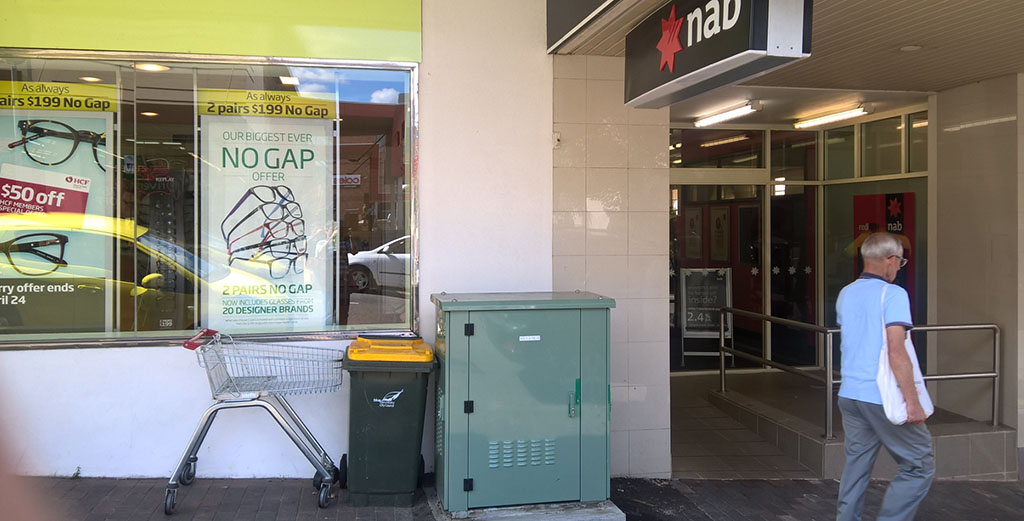

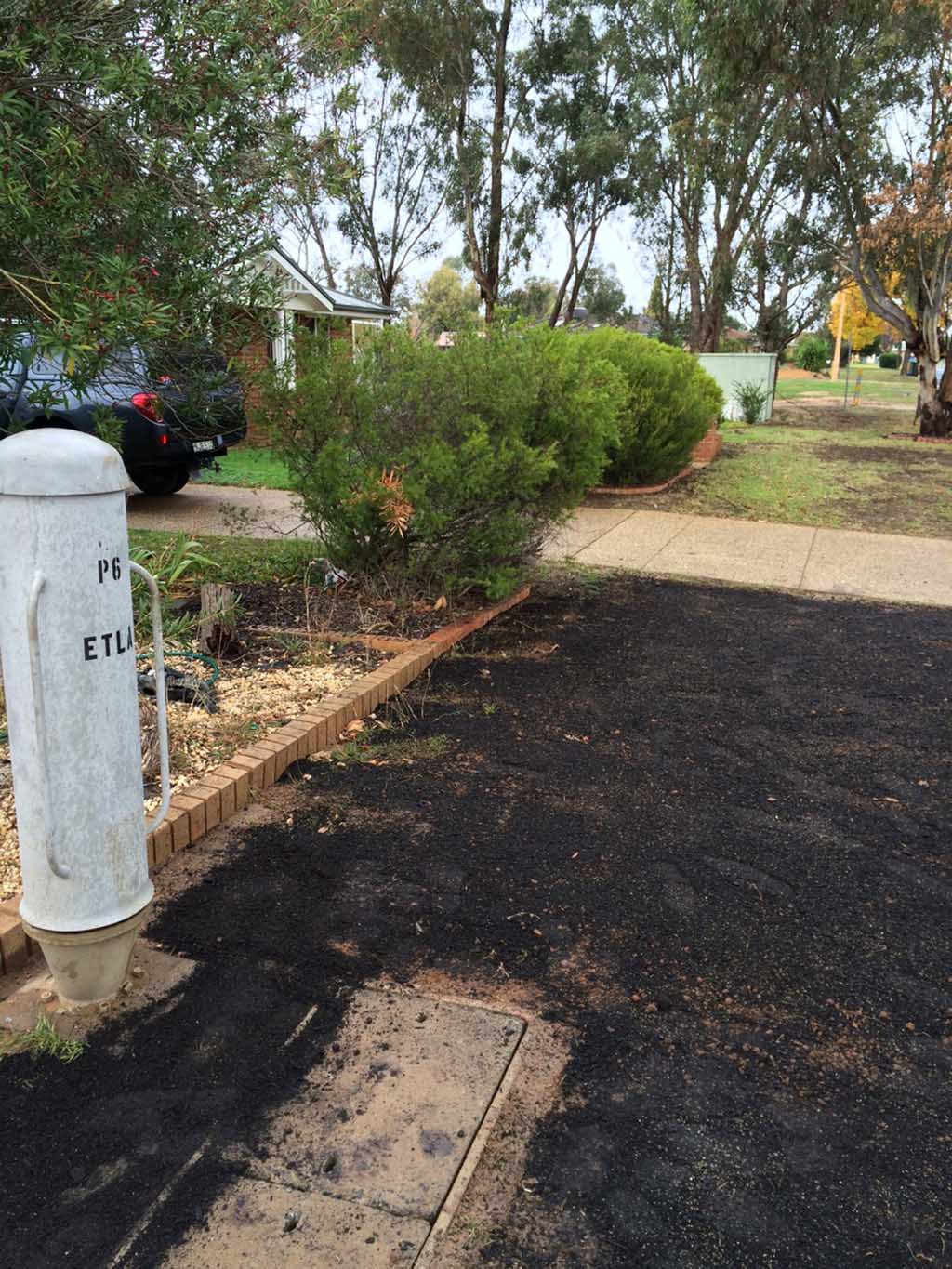




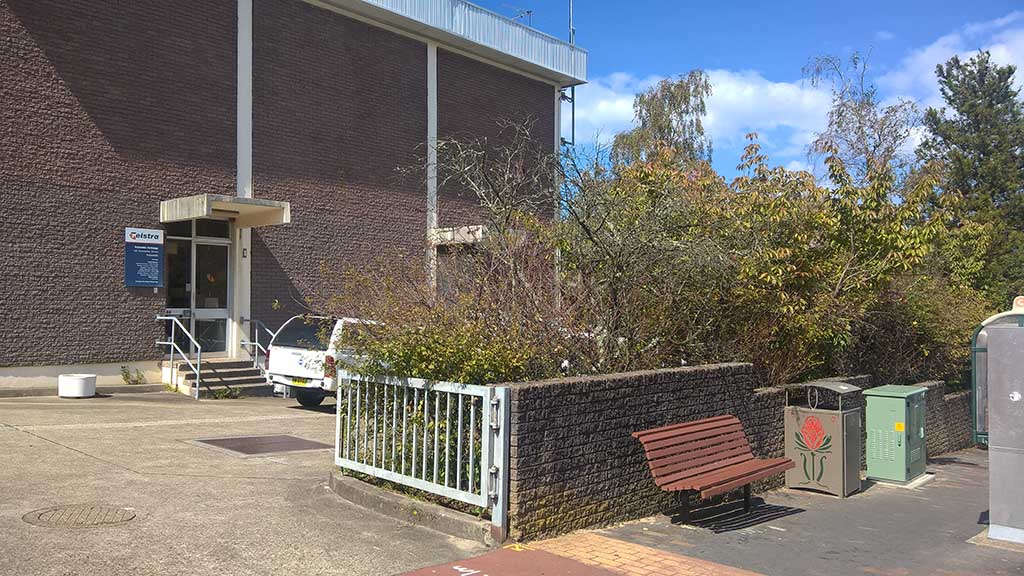
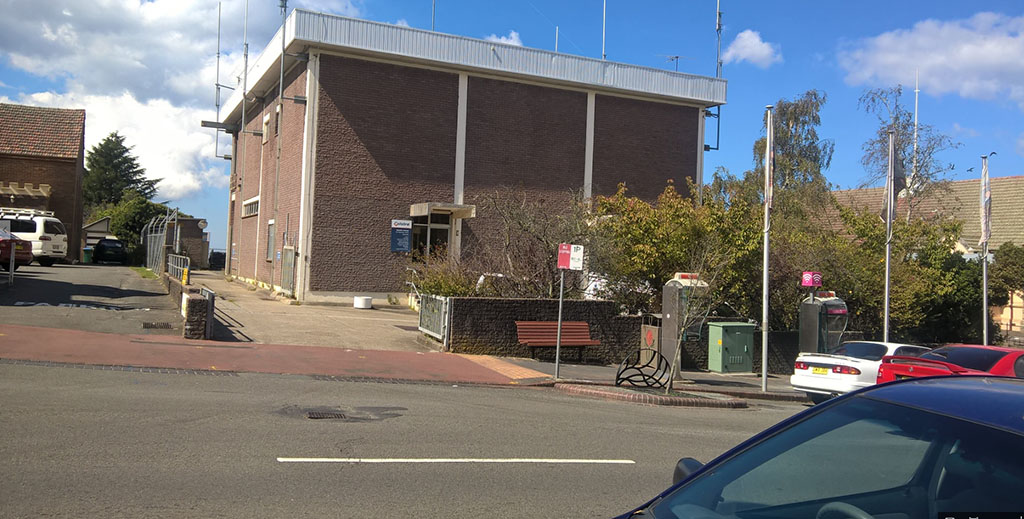





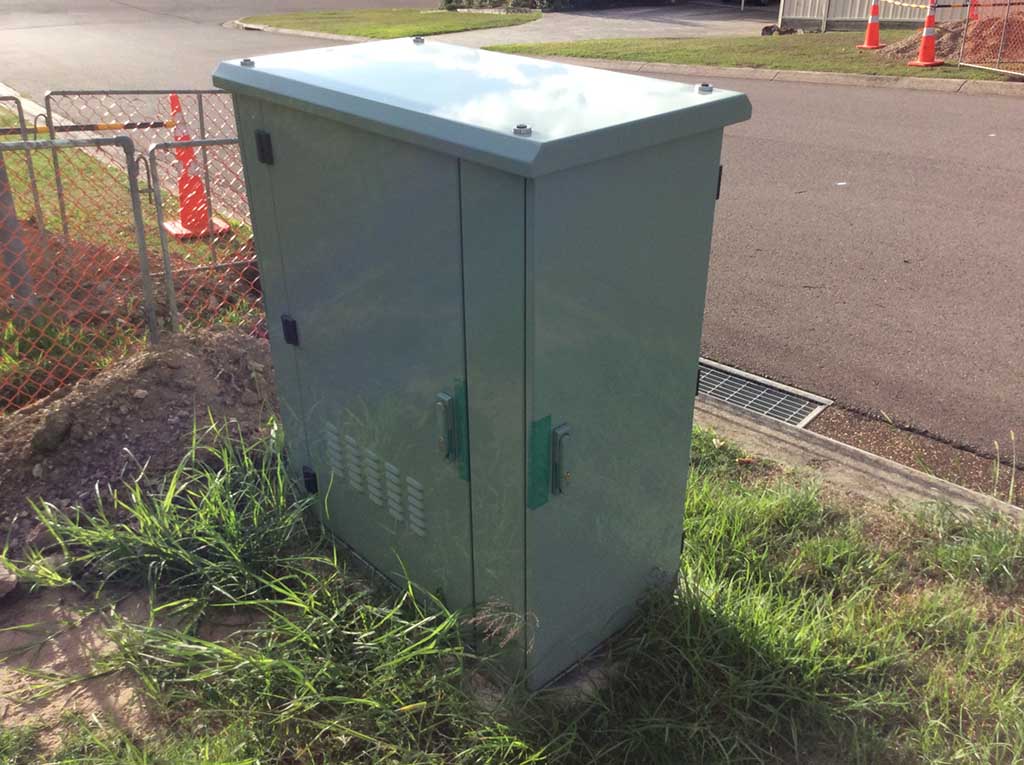
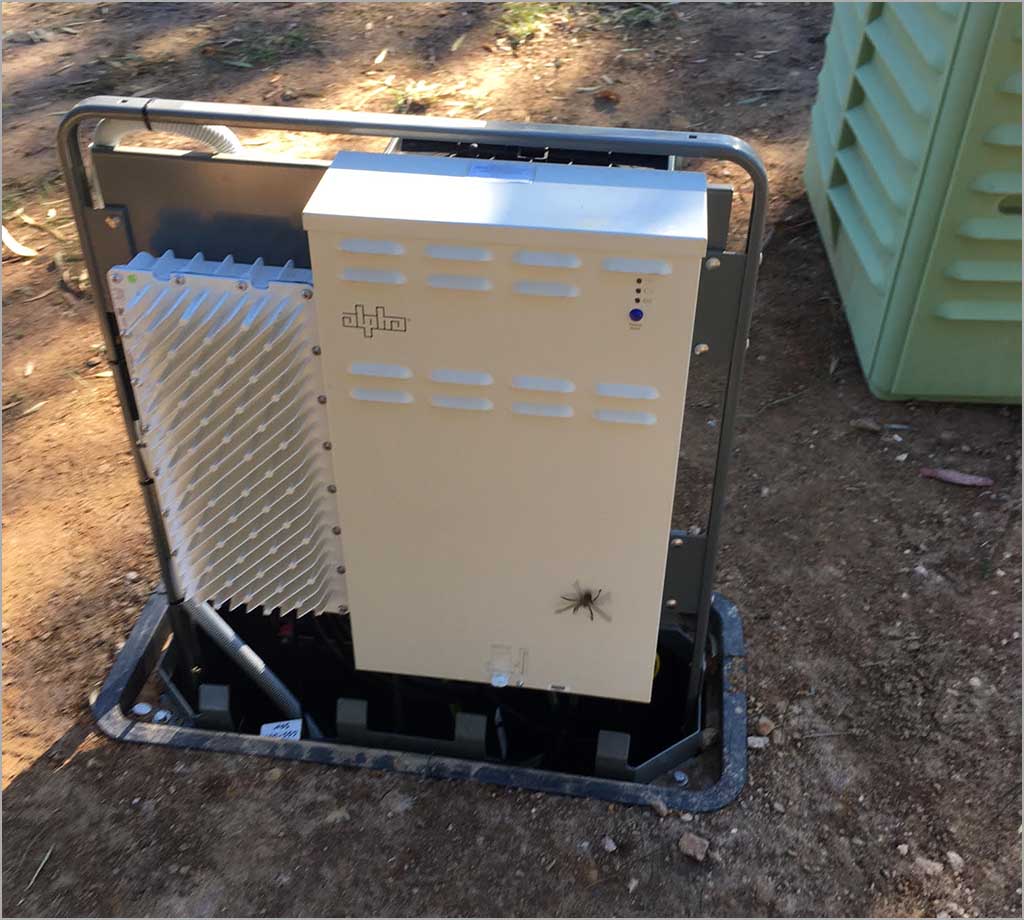
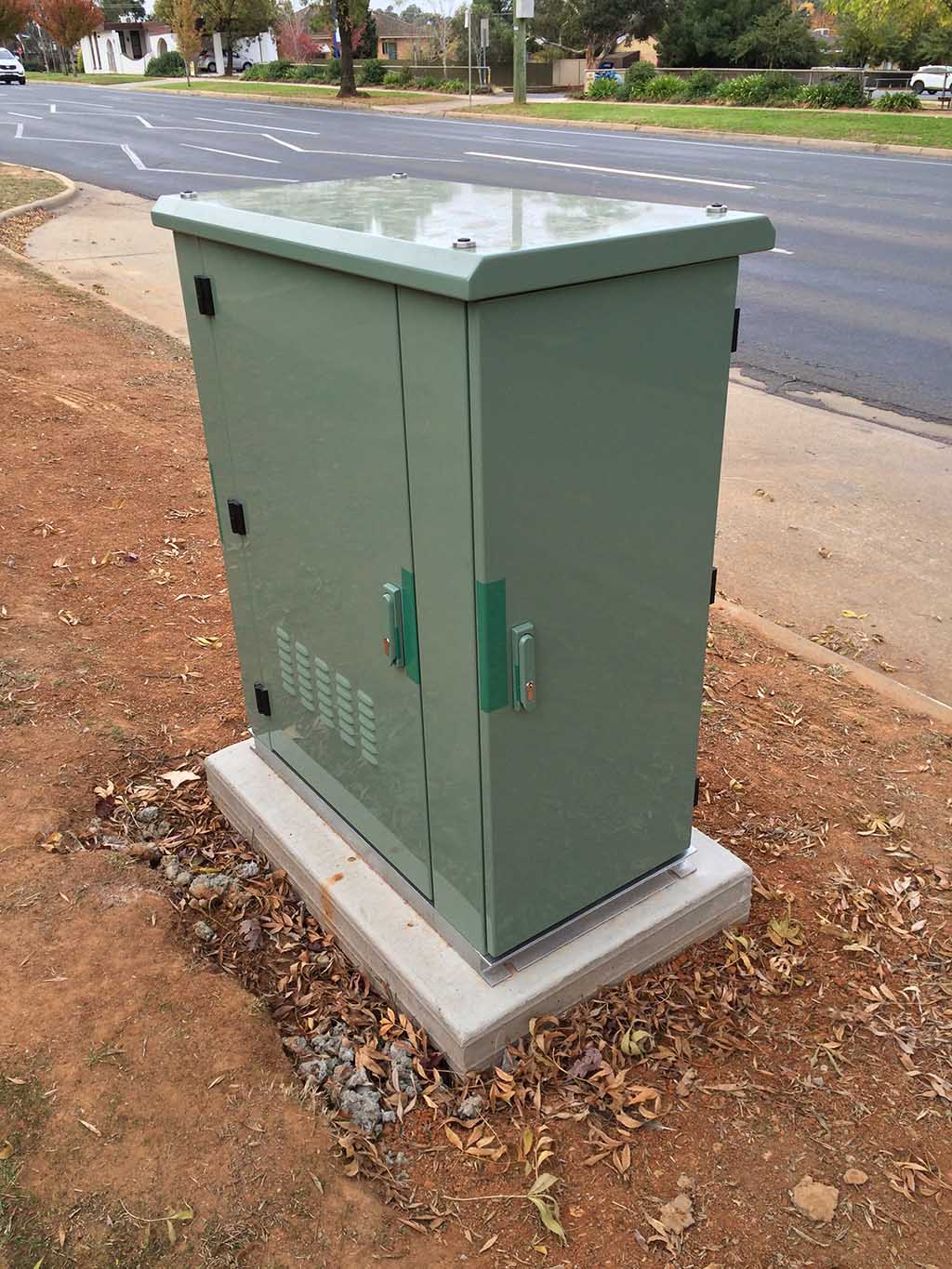
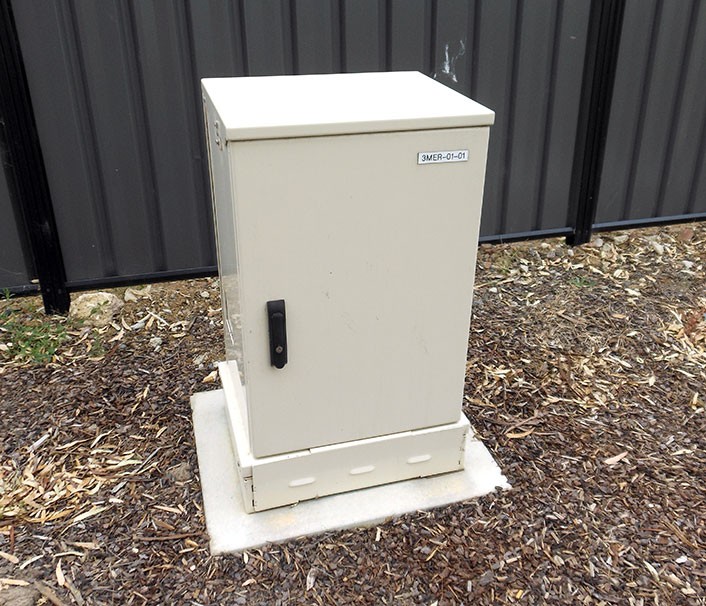

I wonder if the Node on the huge pedestal was up that high for flooding reasons?
Certainly the huge RIM cabinet on the Pedestal seems to be in a flood prone area.
Ah that could be it.
As a side note … flooding is not a huge issue for FTTP — because it doesn’t require power. Not so for FTTN …
Now that you mentioned it. Can we get an update on how much power this energy-lovin’ nodes are going to be consuming, and how much the cost for said energy is going to be?
I don’t see a solar panel within cooee of any of the nodes in the gallery.
Keep up the fine work!
Yeah we know Renai, stop making us Fibre Fan-boi’s more depressed by pointing out how awesome it is… Fucking retard Conservatives!!!
Even fucking Estonia is getting FTTP, but nooooo the CFKD wont let us have nice things….
/end tantrum
Forget Estonia, Zimbabwe, one of the poorest and most corrupt countries in the world is rolling out FTTP.
http://www.technomag.co.zw/2014/03/25/liquid-telecom-injects-32m-to-zim-fibre-contractors/
Actually, by 2020 it is expected that the majority of the planet (600 million homes) will be connected to networks offering them gigabit internet.
http://www2.deloitte.com/global/en/pages/technology-media-and-telecommunications/articles/tmt-pred16-telecomm-dawn-of-the-gigabit-internet-age.html#full-report
As another side note, if that area is prone to flooding, putting the node on a pedestal like that, but leaving the pillar at ground level, isn’t going to solve any problems. I’m fairly certain that when the pillar gets wet, the node will essentially be useless. It may stop the node from being damaged by water, but it isn’t going to allow people to use it, if the power goes off.
Also, does this pedestal apply to all flood prone areas? Bundaberg floods, so I’d like to know if their nodes are on pedestals.
Its not about ‘working’ internet.
It will be about public safety. There’s a significant amount of power stored in those batteries along with a live feed so full submersions probably not a good thing to happen to them.
As for how much electricity someone did some rough sums and guestimated it should be around your typical family household usage etc.
Yeah, just the power cost for FttN is $60m a year, and that doesn’t include the copper maintenance/remediation costs.
The pillar is “supposed” to be air tight how ever most of the o rings on them have stretched and do not seal..
And none of the nodes In bundy are on concrete blocks first I’ve seen on blocks are here in ingham witch are about 600mm high
Indeed and digging up the footpaths (and leaving them shitty) in some areas, to put in new electricity pits, to power nodes?
thanks once again Malcolm Turnbull for championing a far inferior product, so your business mates can get another free kick.
Any FttN placement in 2016 is wrong :-)
GimpCo flood mitigation measure? More expense and the idiocy of placing such electronics in the street apparent.
Or because it looks to be placed right next to a parking zone and it is elevated so it can avoid being reversed into.
Indeed. The FDHs are quite beautiful and elegant by comparison, much more efficient too, of course the fact that the FDHs would have been serving us with much greater speeds for years to come surely mitigates the bad points.
maybe the flexihire node has a pedestal to prevent an angry fttn subscriber hiring a machine to knock it over?
You haven’t yet captured any nodes with added decorations by the public. I’m waiting to see how graffiti-clad boxes will evolve over the next few years.
1, 2, 3, 4,…
I certainly hope that emergency services have contingency plans in place to deal with a crashed vehicle that is sitting on top of 48v of Lead Acid Gel batteries which is what I assume is in the bottom of those nodes.
I also hope that the NBN Co has a good test and maintenance plan and environmentally friendly disposal plan for all of those batteries in the 30000 nodes.
4 batteries x 30000 nodes = 120000 batteries
probably at best 4 years life due to hot summers.
ongoing maintenance of 115 batteries per business day to maintain continuity.
Because we all replace out UPS batteries on time don’t we?
They have hazmat units no need to worry!
This is assuming the batteries are still there and haven’t been appropriated beforehand though.
Telephone exchanges are already full of batteries. Nodes are only an extension of that.
Telephone exchanges are housed inside secure structures.
The term “quick and dirty” springs to mind…
As mentioned in previous comments, the flood levels in a particular area will determine the minimum height of any plinths or pedestals upon which the boxes sit.
As for restoration of surfaces etc. it’s common practice to apply temporary reinstatement (the “thick black line” aka cold mix asphalt) to allow soil and backfill to settle and compact before the final surface is reapplied. Some local councils will also undertake the final restoration themselves (i.e. not the original contractor) in order to guarantee the use of materials that are consistent with the surrounding streetscape. This of course, comes at a cost, and with Councils’ usual lax timeframes for actioning these types of maintenance tasks.
NBN should get ahead of the game and graffiti them. Turnbull with a halo anyone?
“NBN should get ahead of the game and graffiti them. Turnbull with a halo anyone?”
Maybe a halo that has slipped down over his head to become a noose? It’d sum up a lot of people’s feelings of being duped.
Is that a third node on the other side of the street???
That’s what it looked like to me!
Basically saying their cabinets are too small to do the job properly.
I reckon its more likely they are trying to save on the power connections at the cost of run length. Cluster the cabinets and run them off the same power line.
Yes! This is way better than having fibre optic cables hidden from view.
It didn’t take me long to find a good location to install the nodes in my area but finally came up with one. With that location I’ve avoided flooding issues, distance to node and eliminated the electricity cost. Guaranteed it will not effect anyone speed of their current system and whats more is it will reduce installation cost.
http://i.dawn.com/large/2016/02/56c8ae5d8c170.jpg
Well my lot installed one of 3 nodes right next to the exchange…. does that count…? I’m sure it will increase the speeds to the home massively given the copper length is reduced by 4 metres….
Unless you live on the other side of the exchange, then it’s increased by 4m…
Yay!
https://dl.dropboxusercontent.com/u/156978187/WP_20160413_11_30_10_Pro.jpg
So in summary,
FTTN cabinet an eyesore, badly placed and installed, even when construction isn’t finished yet (the fences around the cabinet indicate the job isn’t finished yet).
FTTP cabinet is beautiful, always perfectly placed and installed, and there is never any temporary disturbance of paving during construction.
Is that correct?
You nailed it Sharky ….. Your comprehension and fanboi badges are in the mail.
“the fences around the cabinet indicate the job isn’t finished yet”
So, the job isn’t finished…. So it could move somewhere else? Will it grow legs and walk on its own? Are the fences there to make sure it doesn’t run away?
Seems close to the mark. Got any evidence to support otherwise?
I have 2 nodes within 6 houses of me. Opposite sides of the street, but probably off the same pillar.
Bright side, thus far, speeds have been perfect.
I know others haven’t been so lucky from the POI I’m on, but that was related to iinet not having enough backhaul. Not the node or the actual technology.
FttN as a technology isn’t a real issue. Not ideal, but not terrible… assuming there’s enough bandwidth to each node.
FttN for a new infrastructure project in 2016 is not an intelligent choice. It would have made much more sense for Telstra to do it and set a reasonable cost, than for the current mess.
Even if it was FttN, wireless, and satellite, it’d be ok(ish). Adding cable to it… ugh.
The ‘cabinet’ near the payphone is actually a distribution box for Australia Post – as evidenced by the pole it’s sitting on (obscured partially by the barrier):
https://11217-presscdn-0-50-pagely.netdna-ssl.com/wp-content/uploads/2016/06/6.jpg
Yep, not a third node (thankfully).
To keep Malcolm “promise” of “up to” “25Mbps”, they’ll need to do this a lot…
FTTN ground cancer.
The reason you see multiple nodes together and next to Telstra phone boxes is because its easier to get power to them.
The node that got moved wouldnt surprise me if it was a big pain to get power and easier to just run copper the extra 200 metres.
Power is still one of the biggest issue facing nodes and probably one of the most expensive parts of the whole install.
This fascist lapdog dud is committing high treason, destroying an entire economy, doing what Turdbull says to defend Murdoch.
“Under the ‘skinny fibre’ model for NBN fibre, these Fibre Distribution Hubs can be deployed under the ground — meaning there would be a whole heap less boxes on our streets in general. It might look something more like this (and yes, the lid goes back on):”
Nope…….that’s photo of the Multiports that go on the subscriber side of the splitter cabinet you pictured just above it. The connectorised fibre lead-ins (ie no splicing required) plug into those and run out into the customer’s home.
“It might look something more like this”
“something more like this”
Note that that doesn’t mean “exactly this thing”
Hit Me Boy!
https://twitter.com/Snow_Crash/status/741075916952993792
This would be interesting if I could see it, but seems your choice of image host may be worse than NBN’s choice of node location. The images on this page are loading about a tenth of the way then timing out, and some are not even getting that far (all I see is the broken image icon and text like “node 6”, “node gone” etc. I see the cdn host 11217-presscdn-0-50-pagely[dot]netdna-ssl[dot]com is US based and appears to be having server troubles. Before people start blaming my ISP or network, I can verify that there is no problem reaching the server, just that they are failing to serve images.
Multiple page refresh attempts show no improvement (if anything, it got worse).
Australian based DNS sucks. Perhaps this might be the problem
Reconfigure and use Google DNS
8.8.8.8 and 8.8.4.4
Also make sure your system is not bogged down by Malware. I use AdwCleaner and Malwarebytes Anti-Malware
Yeah it’s something with Delimiter hosting. I’ve been throttled back to 256k and have no issue with other websites, but always have issues with Delimiter.
Prolly a bit poor form for a technology journalist.
Alas, I digress.
Keep up the node shaming.
Works fine for me with Telstra (using the DNS that Snowy posted)
Yes I’m a visitor to a hotel, and it’s up to me to make the bed…?
I have no idea what DNS is. Only know that the bulk of the population lose interest if website doesn’t load within 3 seconds.
Great well to sell the MTM message…
Windows network configuration as well as your modem configuration.
About a month ago I couldn’t access my GoDaddy hosting in the U.S. and BitLy link shortener would not work because DNS server poorly configured at TPG.
All good after I changed the default setting.
@Cabidas
Your hotel’s WiFi must be extremely slow.
What Is A Domain Name Server (DNS) And How Does It Work
http://www.networksolutions.com/support/what-is-a-domain-name-server-dns-and-how-does-it-work/
Access to this site regularly goes down for multi-minute periods on this TPG ADSL2 connection in Mount Gravatt. Renais’ host is simply not the greatest.
Complain to @pagely if you have a problem — they’ve been pretty great for me.
Maybe it’s TPG? I have no problem accessing it via Telstra and/or AARNet
I wouldn’t rule it out, but I fail to see how only a single site would ever be affected.
The one on the post near the phone box looks like a mail storage box, where posties can pick up mail for delivery. The thing on the plinth with stairs in a RIM, which provides telephone access, this one without the “top-hat”. Perhaps this is to keep it above flood-waters?
Yes, the RIM is located on a flood plain (in fact this area flooded in March 2012). The two micro nodes near by are at ground level.
Hi there Julian
Maybe Julian
Probably easy to get power near a ‘phone box.
Nothing stopped them from getting power from the near by street light (which is what most are connected to) or even the exchange. https://goo.gl/maps/shdfKPEkPuk
Nothing but ideology, and that it’s only work at night :o) (jk)
Would probably agree Julian
Comment: Uglyyyyy….. will they historically be known as “Turnbull boxes” ?
Bob
We are in the new technology era, but everybody has not learnt one rule, all telecommunications cable’s and electricity cables are suppose to be underground, that way we get rid of that ugly thing called a Stobie Pole.
Maybe it is what the Councils or Shire’s asked for to replace the old Telecom pillars and Cabinets that are jotted around our streets. The main reason that they probably still above ground is water damage.
That’s a bit of a fallacy based on idealism. While I prefer underground infrastructure, it’s considerably cheaper to install and arguably maintain aerially. While states like WA (Western power) are retrofitting power cabling underground based on claims of long term maintenance cost savings (opex). The speed, ease and cheapness of aerial installation (capex) often has good economic implications also. In Vic while all new infrastructure is underground in new estates, in other older areas it’s still regularly above ground. In most area’s one side of the street comms is underground, while the other side is aerial. While one side may be prone to maintenance issues of falling tree branches, the other side is prone to maintenance issues from water ingress. While new tech makes this less of an issue, you can see in this article how stupid decisions are still regularly made.
I learned a lot of this stuff as I got older. As I recall going on holidays with mum to SA and her championing stobie poles and how Victoria just doesn’t build things to last. Later coming to the adult understanding that if you hit an (original) steel and concrete stobie pole with your car, you’re much less likely to survive compared to the “poorly made” Victorian equivalent.
TLDR: Idealism is fine. But often there are other factors that govern decision making which produce acceptable results in a “function over form” kind way…
Comments are closed.